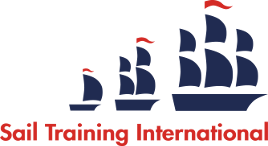“Will there be toilets on board?” Believe it or not, but this is one of the most common questions that young people ask before taking part in a sail training adventure…
Our answer? Absolutely! Sailors call them “heads” instead of “toilets” though, and they’re a little bit different from what you might be used to at home. For example, on a smaller ship, you may have to use a hand pump to flush the head… while a larger vessel might have a traditional toilet.
Let’s find out more…
Why are Marine Toilets Called Heads?
It might sound strange, but calling toilets heads actually makes complete sense.
In the past, only the captain would have had a private toilet near his quarters, at the “stern” (back) of the ship. The rest of the crew would have to make do with a toilet in the “bow” (front) of the vessel, close to the waterline.
By placing a toilet in the bow of the ship, the seawater could wash it out naturally. And, because sailing ships can’t travel directly into the wind, the toilets would always be downwind. So, any unpleasant smells wouldn’t linger for long.
If you hadn’t guessed it already, the bow (front) of a ship is also known as the head…
Today, heads can be located almost anywhere on a ship, because vessels now carry holding tanks and manual and powered pumps. This means that the head doesn’t need waves to wash its contents out into the sea.
Over 6,000 people joined took part in the Tall Ships Races & Regattas in 2019. Book your place and enjoy the experience of lifetime by signing up to take part in 2020!
How Do Heads Work?
The important thing to remember is that you’ll be shown how to use the heads when you get on board, so you don’t need to worry about answering the call of nature. You’ll also be told that you’re expected to clean one as part of your watch!
Depending on the vessel, you may have to use a hand pump to operate the head. Once you’ve done your business, you’ll need to flip a switch which allows you to pump water into the toilet bowl. Next, you flip the switch the other way, and you can pump the bowl out. Simple!
The most important thing to remember about the heads is not to put anything down them that you didn’t eat first – this includes toilet paper – with no exceptions. No dental floss, feminine hygiene products… or old parking tickets. You’ll be provided with a separate rubbish bin or trash can for these items.
There are lots of videos about how to use a marine toilet/the heads. We particularly like this one.
Heads and the Environment
Environmental laws can differ around the world, but many countries have marine sanitation legislation that prohibits ships from discharge raw sewage into the sea near coastal or sensitive areas. So, ships usually have tanks for collecting waste from the heads, which they can empty in ports.
Check out www.sailonboard.com for more information on sail training and the environment and the Blue Flag Scheme.
Learn the Lingo
There’s lots of sailing terminology out there… and it takes most people a while to get to grips with using different words for things like the toilet and kitchen (it’s “galley”). But don’t worry, you’re not alone. Everyone has to start somewhere, and we’ve put together a useful list of common sailing words and phrases in our Terminology section to help you out.
We’d love to hear about your first experience of using a marine toilet/head. Was it what you expected? Was it easy to use? What advice would you give to someone before they take part in their first sail training adventure?

